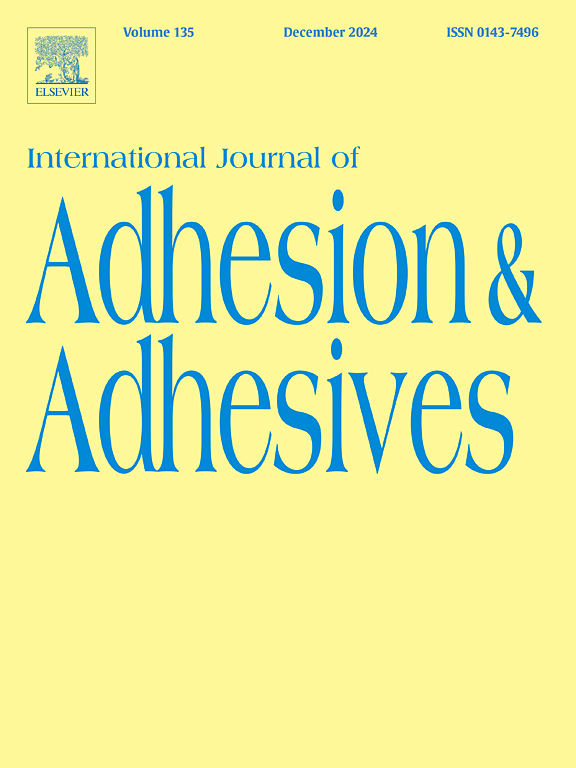Numerical investigation of patch geometry effect on the fatigue life of aluminum panels containing cracks repaired with CFRP composite patch using XFEM and CZM approach
IF 3.5
3区 材料科学
Q2 ENGINEERING, CHEMICAL
International Journal of Adhesion and Adhesives
Pub Date : 2024-11-07
DOI:10.1016/j.ijadhadh.2024.103882
引用次数: 0
Abstract
This study investigated numerically the effect of using composite patches with various geometric shapes to improve the fatigue life of aluminum panels of AA7075-T6 and AA2024-T3 containing cracks and compared with the available experimental results. The Cohesive Zone Model (CZM) and Extended Finite Element Method (XFEM) were applied to static and fatigue analyses. Four types of rectangular, trapezoidal, left-oriented triangular and right-oriented triangular composite patches were used in the numerical analysis. With the combination of XFEM and CZM methods, and using the Paris equation, the fatigue crack propagation and fatigue life of aluminum panels containing cracks can be reasonably predicted. A composite patch with a suitable shape and geometry, fatigue life of the repaired panel can be improved considerably. With a 204 % improvement in fatigue life in comparison to the unrepaired panel, the repaired sample made of aluminum alloy AA2024-T3 alloy achieved the most significant improvement in fatigue life. In AA7075-T6 alloy samples repaired with composite patches, the samples repaired with rectangular and trapezoidal patches experienced the highest fatigue life increases, respectively with 342 % and 290 % compared to the unrepaired samples. The comparison of numerical simulation results with the available experiment results shows a good agreement.
利用 XFEM 和 CZM 方法,对补丁几何形状对使用 CFRP 复合材料补丁修复的含裂纹铝板疲劳寿命的影响进行数值研究
本研究通过数值方法研究了使用各种几何形状的复合材料补丁对提高含有裂纹的 AA7075-T6 和 AA2024-T3 铝板疲劳寿命的影响,并与现有的实验结果进行了比较。在静态和疲劳分析中应用了内聚区模型(CZM)和扩展有限元法(XFEM)。数值分析中使用了四种类型的矩形、梯形、向左三角形和向右三角形复合材料贴片。结合 XFEM 和 CZM 方法,并使用巴黎方程,可以合理预测含有裂纹的铝板的疲劳裂纹扩展和疲劳寿命。采用形状和几何形状合适的复合补片,可大大提高修复后面板的疲劳寿命。与未修复的面板相比,修复后的铝合金 AA2024-T3 样品的疲劳寿命提高了 204%,是疲劳寿命提高幅度最大的。在使用复合材料修补片修复的 AA7075-T6 合金样品中,使用矩形和梯形修补片修复的样品的疲劳寿命提高幅度最大,与未修复样品相比,分别提高了 342% 和 290%。数值模拟结果与现有实验结果的比较显示两者具有良好的一致性。
本文章由计算机程序翻译,如有差异,请以英文原文为准。
求助全文
约1分钟内获得全文
求助全文
来源期刊

International Journal of Adhesion and Adhesives
工程技术-材料科学:综合
CiteScore
6.90
自引率
8.80%
发文量
200
审稿时长
8.3 months
期刊介绍:
The International Journal of Adhesion and Adhesives draws together the many aspects of the science and technology of adhesive materials, from fundamental research and development work to industrial applications. Subject areas covered include: interfacial interactions, surface chemistry, methods of testing, accumulation of test data on physical and mechanical properties, environmental effects, new adhesive materials, sealants, design of bonded joints, and manufacturing technology.
 求助内容:
求助内容: 应助结果提醒方式:
应助结果提醒方式:


